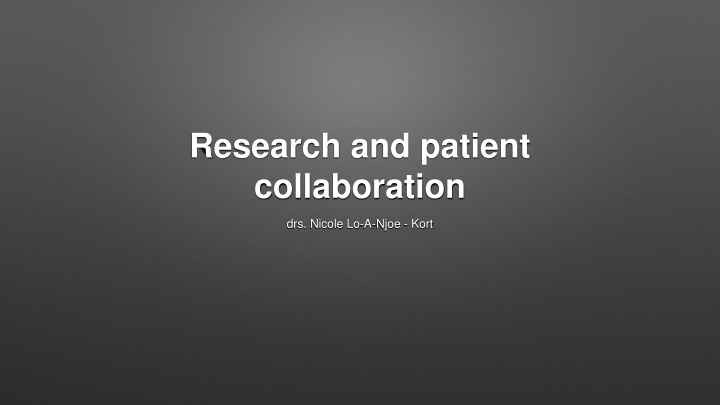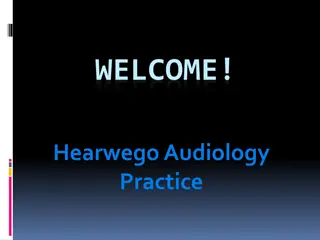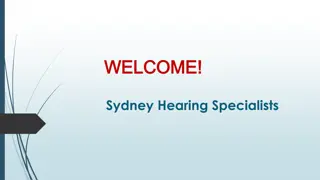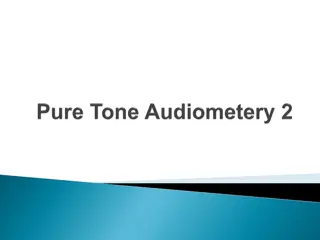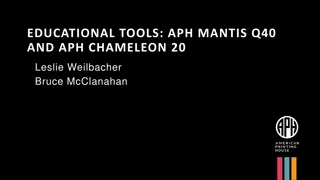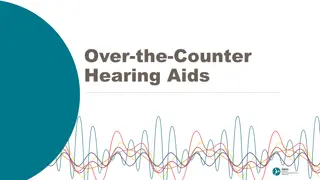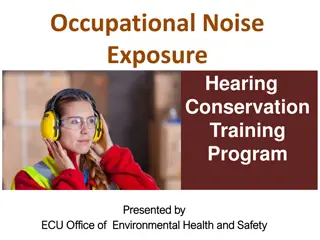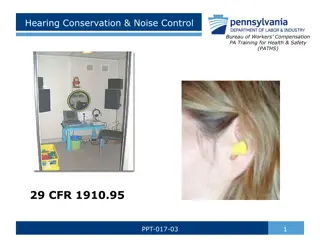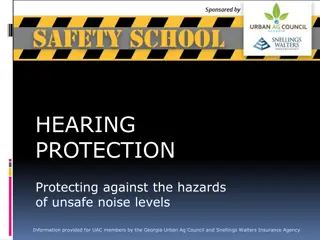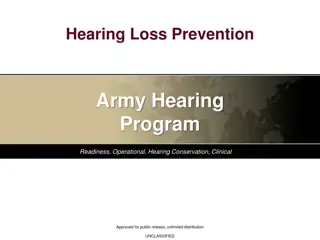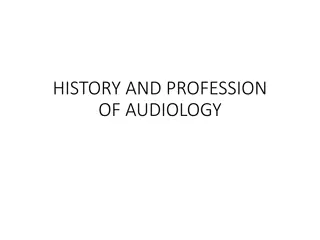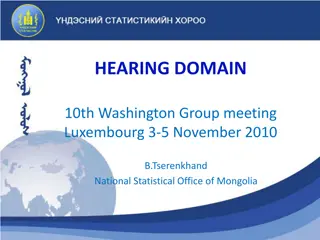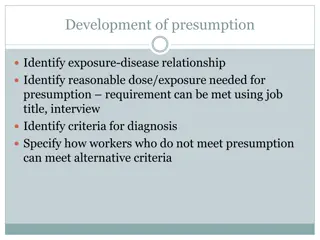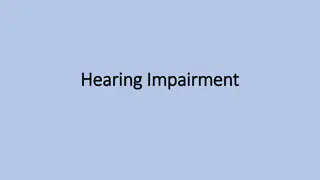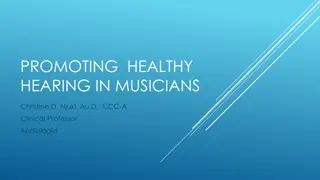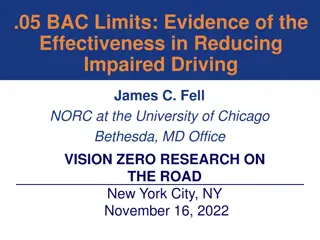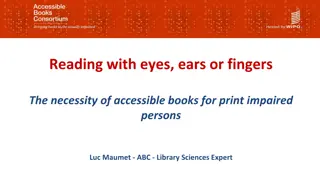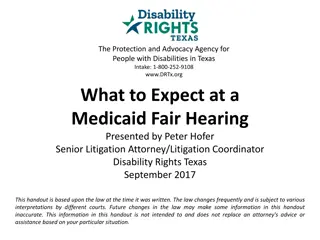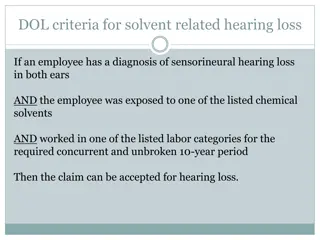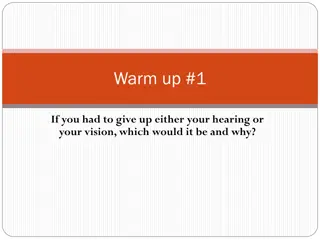Patient Collaboration in Research: Journey of a Hearing Impaired Medical Student
A journey of perseverance and dedication unfolds as a hearing-impaired individual thrives in the world of medicine, engaging in collaborative research on Usher syndrome. From her educational challenges to her impactful thesis work, this individual's commitment to patient involvement and genetic correlations in deafblindness shines through.
Download Presentation

Please find below an Image/Link to download the presentation.
The content on the website is provided AS IS for your information and personal use only. It may not be sold, licensed, or shared on other websites without obtaining consent from the author.If you encounter any issues during the download, it is possible that the publisher has removed the file from their server.
You are allowed to download the files provided on this website for personal or commercial use, subject to the condition that they are used lawfully. All files are the property of their respective owners.
The content on the website is provided AS IS for your information and personal use only. It may not be sold, licensed, or shared on other websites without obtaining consent from the author.
E N D
Presentation Transcript
Research and patient collaboration drs. Nicole Lo-A-Njoe - Kort
Think in possibilities A photo of my first half marathon in the forest. Discription of the photo: in the upper right corner you can see trees. In the center you see two woman running, connected by a ribbon. I run left, my buddy runs to my right on a sandy path. A third woman runs at the bottom right.
Personal background Hearing impaired diagnosis at he age of 4 Regular education, after first 1 year special needs education Volley-ball national youth championships High school Medicine studies
Medicine studies Hearing aids Study in a group of 400 Bachelors degree after 3 years First year of master study in internships > pregnant Second year master diagnosis Usher syndrome, as well as my wedding Obtaining medical degree may 2011
Thesis Usher syndrome 2a Genotype-Phenotype correlations in patients with mutations in USH2A Supervisor dr. R. Pennings, ENT Nijmegen Start collaboration patient and medical researchers 2010 Patient involvement in care and research is adopted by our institution, the Radboud medical centre
Genotype-Phenotype correlations in patients with mutations in USH2A (1) Usher syndrome: 75% of hereditary deafblindness population Type 2 accounts for >50% of all Ushers Actual list 16 genetical subtypes: http://hereditaryhearingloss.org Usher 1A-H, J and K Usher 2A-D Usher 3A and B Usher type 2A represent 72-82% of Usher type II cases
Genotype-Phenotype correlations in patients with mutations in USH2A (2) A combination of two truncating mutations (incl 2299delG) causes more severe and progressive hearing impairment Studygroup 65 dutch and 45 Swedisch Results: gradual decline of hearing 0.4-0.5 dB/year at 0.25-2kHz 0.7-0.8 dB/year at 4-8kHz 2 truncating mutations > significantly more hearing loss
Step bij step 1. First researchers ENT 2. Start a foundation 3. Creating a board of advisers 4. Connect with patients 5. Research needed 6. Fund research 7. Follow the results
SWODB Foundation to support research to improve quality of live for people with deafblindness. Connect orthopedagogie, medical, biological and revalidation and patients. Champion the patients voice
Fund research Goal: Development of a pre-clinical treatment for USH2A-related blindness. Start june 2016 Exonskipping with pathogenic mutations leeds to a smaller protein with enough rest- function
Results There are zebrafish with Usher syndrome Exon skipping works in zebrafish Deletion in exon 30 and 31 using crispr-cas technologie Exon skipping technologie has been developed for exon 31
Publications Slijkerman RWN, Kremer H, Van Wijk E. (2018) Antisense oligonucleotide design and evaluation of splice-modulating properties using cell- based assays (chapter 34). Methods Molecular Biology, Vol. 1828, Toshifumi Yokota and Rika Maruyama (Eds): Exon Skipping and Inclusion Therapies, 978-1-4939-8650-7 (Springer Nature). Dona M, Slijkerman RWN, and Van Wijk E, et al (2018) Usherin defects lead to early-onset retinal dysfunction in zebrafish. Experimental Eye Research 173:148-159. Slijkerman RWN, Goloborodko A, Van Wijk E, et al (2018) Poor splice-site recognition in a humanized zebrafish knock-in model for the recurrent deep- intronic c.7595-2144A>G mutation in USH2A. Zebrafish 15:597-609. Dona M, Van den Bos R, Van Wijk, E. Behavioral assays to measure visual function in zebrafish larvae. Manuscript in preparation
ProQR Stellar study Start Usher RNA genetherapy USH2A in Belgium, France and USA QR-421a for Usher syndrome 2A exon 13 We are developing a novel investigational drug called QR-421a to treat the vision loss associated with Usher syndrome, the leading cause of combined deafness and blindness. QR-421a is designed to exclude a specific part of the USH2A mRNA, called exon 13, thereby removing the mutation and potentially reversing the disease. This approach is also known as exon skipping. https://www.proqr.com/qr-421a-for-usher-syndrome-type-2/
DB-connect DB-connect is the National Resource Center on Deafblindness in the Netherlands. DB-connect was established in 2017 by five organizations that provide services for people with DB. The mission of DB-connect is to: Enable people with deafblindness to live and participate in society the way they want
Goals DB-connect The following goals are pursued: A. Making expertise and services accessible B. Securing, bundling and further developing expertise C. Close collaboration between people with DB and professionals
Experiences with collaboration Collaboration starts with trust and building trust takes time Professionals show enhanced awareness of the importance of collaborating with people with DB It is important that experts with DB get paid for their involvement to create equality Collaboration comes with (practical) challenges
You need to be aware of what others are doing, applaud their efforts, acknowledge their successes, and encourage them in their pursuits. When we all help one another, everybody wins. Jim Stovall
